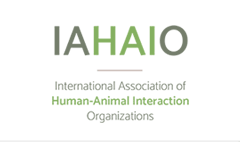Abstract
The main aim of this study was to identify whether the social environment of canine-assisted intervention (CAI) influenced the beneficial effects on higher education (HE) students’ mental health. A second aim explored whether attachment style predicted the effect of being part of a CAI group. Sixty-seven participants interacted with a canine for two minutes, either individually, as part of a pair, or as a trio. Anxiety, stress, depression, and well-being were measured pre and post intervention, alongside attachment style. The results found no difference in the effectiveness of CAI when taking part individually, in pairs, or in a trio, meaning the social environment of CAI had no impact on the beneficial effects of CAI. Additionally, attachment style had no impact on the effectiveness of CAI when taking part in a trio. However, when taking part individually, a proximity seeking style predicted post depression, and in pairs, an insecure mistrust attachment style predicted post cheerfulness and feeling loved, and both insecure mistrust and proximity seeking styles predicted post confidence and relaxation. Overall, this study used a CAI group environment to explore the differences between taking part in CAI individually, in a pair, or as a trio in HE students and demonstrated that the social environment of CAI had no impact on its effectiveness in reducing anxiety, stress, and depression levels, or increasing well-being in the treatment group.
Recommended Citation
Manville, Karen; Coulson, Mark; and Reynolds, Gemma
(2024)
"The Effectiveness of Individual and Group Canine-Assisted Interventions in Improving Mental Health in Higher Education Students,"
People and Animals: The International Journal of Research and Practice: Vol. 7
:
Iss.
1,
Article 11.
Available at:
https://docs.lib.purdue.edu/paij/vol7/iss1/11


